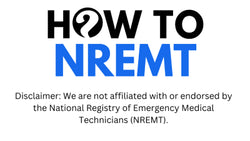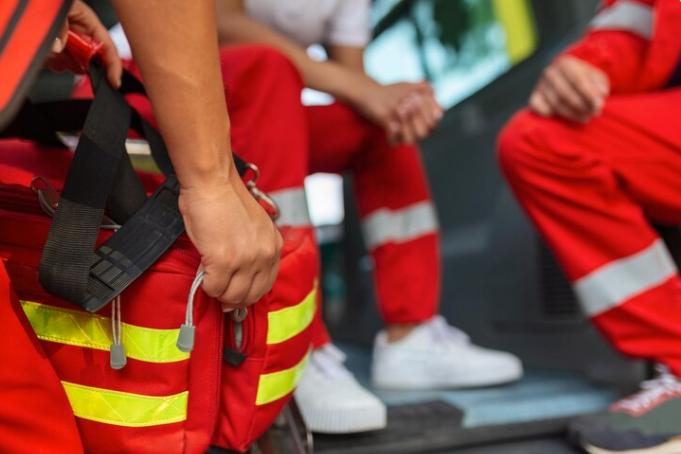The AEMT and Paramedic exams aren’t what they used to be and if you’re testing in 2025, you need to know exactly what’s changed. Gone are the days when memorizing protocols and drug dosages could carry you across the finish line. Now, the AEMT and paramedic test plan in 2025 demands clinical judgment, scenario thinking, and the ability to act like you're already in the field.
This isn’t just about learning more—it’s about learning differently.
What you’ll face on exam day mirrors what you’ll face on real calls. Interactive questions, evolving case scenarios, and new domains challenge how you prioritize care under pressure. It’s no longer just “What’s the right answer?”; it’s “What should I do first, and why?”
Whether you're a first-time tester or retaking the NREMT, this guide breaks it all down: what’s new, how to adapt, and why smart study strategies like paramedic tutoring and targeted NREMT prep can make the difference between passing and restarting.
Let’s get you prepped—2025 style.
1. What’s Changed: A Fresh Focus on Clinical Judgment
The new AEMT and paramedic test plan for 2025 shifts away from rote memorization and leans hard into real-time thinking. It’s not just about recalling drug dosages or trauma protocols anymore. It’s about applying that knowledge under pressure, in fast-moving scenarios that mirror the street.
The test now expects you to think like a field medic. You won’t just answer “What’s the medication for bradycardia?” You’ll be asked to evaluate a patient, recognize early warning signs, and decide what to do before that bradycardia spirals. The order of your actions matters. The logic behind your choices matters even more and that’s the core shift: clinical judgment.
Expect more questions where there’s no single “perfect” answer; just a “best first step.” You’ll need to manage evolving patient presentations, shifting vitals, or limited resources, all while keeping patient safety and EMS protocols in mind.
To succeed, you'll have to demonstrate:
·Quick assessment skills
·Safe, prioritized care decisions
·Strong grasp of EMS operations in unpredictable situations
In short, the exam now mirrors what you’ll face on your first solo call. If you're not studying to think like a provider, you're studying the wrong way.
2. The Five Major Domains, Updated
The test blueprint divides content into five domains. Here's a breakdown:
|
Domain |
Focus Areas |
|
Airway, Respiration, Ventilation |
Advanced airway management, ventilator use, respiratory assessments |
|
Cardiology & Resuscitation |
ECG interpretation, algorithm-based decision paths, shock protocols |
|
Trauma |
Multi-system trauma, rapid trauma assessment, mechanism-based care |
|
Medical/OB/GYN |
Medical emergencies, obstetrics, toxicology, neuro responses |
|
EMS Operations & Clinical Judgment |
Scene management, triage, communication, documentation, ethics |
These align closely with the NREMT cognitive exam flow. Your study should mirror this layout to ensure coverage.

3. Why Clinical Judgment Items Matter
You’ll encounter Technology Enhanced Items (TEIs) like drag-and-drop, build-list, and checkbox-style questions. These aren’t just new formats; they’re a new mindset.
Instead of selecting a single correct fact, you’ll often have to sequence a treatment plan, prioritize interventions, or analyze a patient's changing presentation. The focus is no longer just “What do you know?” It’s “How do you apply what you know under pressure?”
This is where many candidates stumble. They prepare by memorizing, but the exam is now testing your process of thinking. If you can’t evaluate, prioritize, and adapt, you’ll hit a wall even if you know the content cold.
That’s why clinical judgment items matter so much. They measure:
·Decision-making accuracy
·Ability to connect symptoms with interventions
·Risk management (What’s safest first?)
·Readiness to work in uncontrolled environments
In our paramedic national registry prep, we build these skills deliberately. You won’t just get practice items; you’ll learn how to interpret evolving vitals, recognize unstable patterns, and think through the call like a provider would.
This is EMS thinking, not just EMS trivia, and it’s the only way to be ready for 2025’s test.
4. Mastering the Domain Breakdown
Let’s look closer at each domain and how to prepare:
Airway, Respiration & Ventilation
·Knowledge of advanced airway devices
·Ventilator setup and troubleshooting
·Managing respiratory failure and distress
Prep tip: Simulated airway labs and video drills work best here.
Cardiology & Resuscitation
·ECG rhythm ID and treatment decisions
·ACLS algorithm comprehension
·Post-arrest care and cardiac emergencies
Prep tip: ECG strip drills and mock code scenarios boost fluency. Use paramedic tutoring to correct misinterpretations.
Trauma
·Rapid trauma assessment
·Bleeding control and spinal stabilization
·Multi-system trauma decisions
Prep tip: High-fidelity simulations and skill labs lock in trauma decision paths.
Medical/OB/GYN
·Pulmonary edema and sepsis recognition
·Diabetic emergencies and stroke signs
·Delivery and neonatal care
Prep tip: Create flashcards grouped by system symptoms and treatment priorities.
EMS Operations & Clinical Judgment
·Scene safety and triage
·Documentation, communication, ethics
·Crisis resource management
Prep tip: Role‐play dispatcher scenarios to practice soft skills under time pressure.

5. TEI Formats You’ll Face
The exam now uses more interactive item types. You can expect:
1. Build‑List – e.g., sequence of steps in RSI
2. Drag‑and‑Drop – e.g., match anatomy to waveform
3. Checkbox Tables – e.g., symptoms by cardiac event type
The test often blends TEIs with traditional questions. We ensure every learner spends 30% of study time on TEI formats. That gives fluency and prevents exam-day surprises.
6. Designing Your Prep Plan
Here's the weekly study structure we recommend:
|
Week |
Focus Area |
Tools to Use |
|
1–2 |
Airway & Respiratory |
Skill labs, airway simulations, build-list TEIs |
|
3–4 |
Cardiology & Resuscitation |
ECG drills, code simulation, paramedic tutoring |
|
5–6 |
Trauma & Medical/OB |
Scenario practice, trauma tables, checklist integration |
|
7 |
EMS Ops & Clinical Judgment |
Communication drills, ethical scenarios, TEI practice |
|
8 |
Full-length CAT Sim |
Simulation with timed adaptive logic |
This ensures strategic alignment with best way to study for NREMT principles—structured, integrated, and paced.
7. How Paramedic Tutoring Fits In
Group classes teach content. But to master complex decision-making, paramedic tutoring works weekly on:
·Reviewing weak rhythms, trauma scenarios, airway steps
·Building reasoning in real-time drills
·Covering TEI formats through live exercises
This one-on-one support fills your hidden prep gaps quickly.
8. The Ties Between Prep and Passing
Our data shows students using integrated domain and TEI drills have a 30% higher pass rate. That’s not just a small margin; it’s the difference between moving forward in your EMS career or getting stuck retaking the exam.
Why such a dramatic boost? Because the best way to study for NREMT isn’t just memorizing flashcards or watching long lectures. It’s training your brain to recognize real-world patterns, the same way your preceptor would expect you to react in the field. Clinical decision-making, sequencing care, anticipating deterioration, and recognizing when your plan isn't working, all of these are critical in 2025’s exam model.
When candidates train only with traditional quizzes, they’re unprepared for TEIs or scenario-based challenges. However, with paramedic national registry prep that mirrors the new format, they learn to think on their feet, not freeze under adaptive pressure.
We also reinforce confidence. Many repeat test-takers fail not because they don’t know the material, but because stress overrides their decision-making. The right prep reduces that mental friction.
When your prep mimics the exam and field conditions, you’re not surprised on test day, you’re ready, and that’s exactly the kind of readiness that gets passing results.

9. Final Exam Period Checklist
As the test approaches:
Do final CAT simulation
Do focused TEI review drills
Go through high-yield flashcards daily
Do active recall without notes
These steps help cement knowledge and calm your test-day nerves.
FAQs
Q: When did the new 2025 test plan launch?
A: Implementation began in early 2025, replacing older ALS-based formats.
Q: Do I need tutoring?
A: If you want faster progress and fewer errors, yes—tutors give targeted feedback.
Q: How many TEIs should I practice?
A: Minimum 50 build-list + 50 drag-drop + 50 checkbox questions is ideal.
Q: What’s the main study theme?
A: Think clinical reasoning over memorization. Simulate field logic, not flashcards.

How To NREMT Can Help You Ace the 2025 Exam
We’re here to guide every step. Our prep includes:
Full AEMT and paramedic test plan for 2025 curriculum
TEI-rich simulations and assessments
Personal paramedic tutoring
Live critical-thinking workshops
Dedicated NREMT cognitive exam prep modules
If you're ready to pass confidently in 2025, let's get started. Join us now and ensure success on your first attempt. For those taking upcoming test, join our 7 or 14 day paramedic boot camp held online. Hurry up! Slots are filling quickly.

